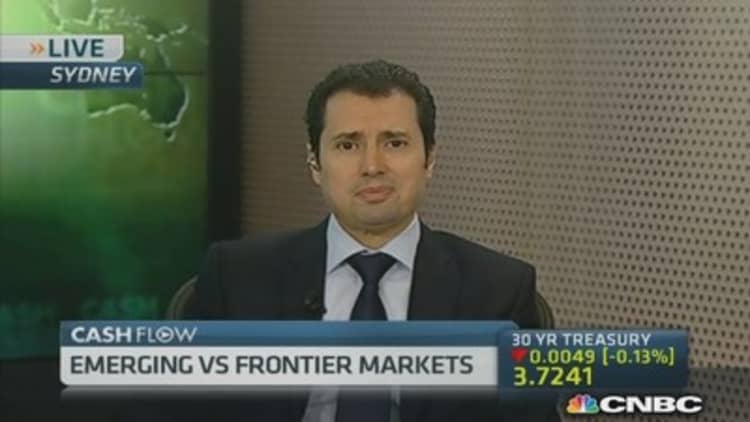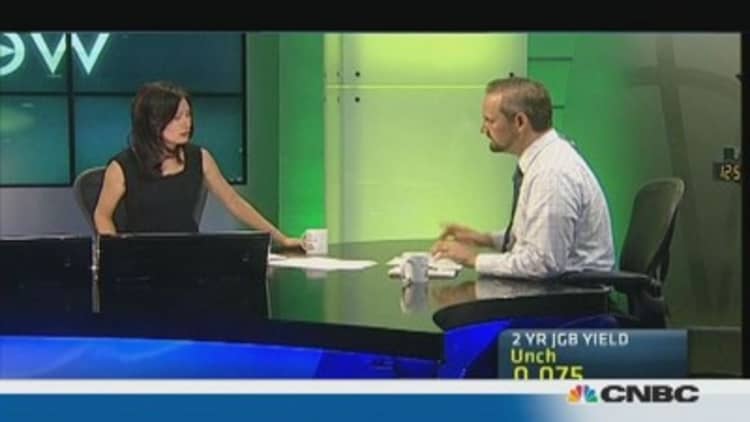Bargain hunters eyeing the drop in emerging market equities may want to shift their focus to the segment's unloved bonds instead.
Emerging market assets have certainly been unloved: So far this year, $10.9 billion has flowed out of emerging market bond funds and $24.6 billion has exited emerging market equity funds, according to data from Jefferies. Around $15 billion flowed out of emerging market stock funds last year, Reuters reported.
(Read more: Are emerging markets really suffering from outflows?)
The segment has been selling off in fits and starts since the U.S. Federal Reserve said last May that it would soon begin tapering its asset purchases, spurring fund outflows amid expectations of tighter monetary policy.
But while emerging market equities are now trading at a 30 percent discount to developed market counterparts on a price-to-book basis, stocks aren't really trading at value levels, Societe Generale said in a note, citing equity risk premiums, or the excess return an asset must pay over the "risk-free" rate to compensate investors for the additional risk.

(Read more: When will it be time to buy back into emerging markets?)
The global emerging market equity risk premium is at 6.2 percent, compared with its average of 5.6 percent, while the developed market risk premium is at 4.8 percent against its average of 3.9 percent, Societe Generale said.
It expects emerging market equities are vulnerable to further de-rating. "With the gap between emerging market and developed market growth narrowing, emerging market equities are no longer high growth assets and hence investors should wait for value to emerge before seriously considering emerging market equities," it said.
(Read more: Are EM companies the real debt worry?)
"In fact, the equity risk premium of three (India, Brazil and Russia) of the four BRIC countries is below the long-term average and relatively unattractive," it said, adding government bonds in these countries are more attractive than stocks.
Overall, global emerging markets' 10-year government bond yield is averaging around 5.7 percent, compared with 2.4 percent in developed markets, it said.

To be sure, in the final BRIC market, China, Societe Generale believes stocks remain attractive and it expects them to do well this year after "initial hiccups."
And while emerging market bonds may look more attractive than the segment's equities, others have also noted that the stocks are looking undervalued compared with developed market counterparts.
(Read more: Hedge funds sit out the emerging market turmoil)
"In terms of relative price/earnings ratios, the degree of undervaluation of emerging market equities generally relative to developed market equities is now close to the largest in over a decade," Capital Economics said in a note.
"Of course, the fact that valuations are low does not prevent them from falling further," it said. "But a lot of bad news does now appear to be priced in," it added.
Capital Economics expects emerging market equities could perform in line with developed market peers this year after their underperformance last year.
—By CNBC.Com's Leslie Shaffer; Follow her on Twitter @LeslieShaffer1

